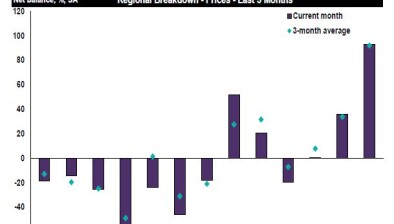Scottish Parliament urged to consider findings from permitted development rights research
 A new research report has highlighted the benefits, implications, and losses for public authorities and communities by extending permitted development rights.
A new research report has highlighted the benefits, implications, and losses for public authorities and communities by extending permitted development rights.
Published by the Royal Institution of Chartered Surveyors (RICS), Extending Permitted Development Rights (PDR) in England looks at the implications of extending the policy.
The paper, although aimed at England, revealed interesting research into the effects of tighter PDR controls in Scotland, which the RICS belives should be considered by the Scottish Parliament’s local government and communities committee (LGCC) as it reviews the Planning (Scotland) Bill.
The researched looked in detail at PDR in England, but as part of a case study approach, used Glasgow - where office-to-residential conversions require full planning permission - as the comparator in Scotland. The report found higher quality residential schemes in Glasgow, with better space standards.
Housing delivery is high on the political agenda, with the Scottish Government tabling a Planning Bill at the end of 2017 – following an independent review – with an objective to increase house starts by reforming the efficiency of the planning system.
Hew Edgar, RICS policy manager in Scotland, said: “The Housing Minister has been clear that he wants the Planning Bill to speed up the delivery of housing and infrastructure as means to tackle the chronic housing shortage in Scotland.
“Permitted development rights have potential to ease the housing crisis and speed up delivery of developments by reducing regulatory burdens. However, regulatory safeguards are necessary to mitigate negative aspects of development and to uphold minimum standards. Bypassing regulations may create more problems than it solves.
“Looking specifically at office or agricultural to residential, the Scottish Government needs to balance the competing priorities of housing, infrastructure and need for commercial spaces. In some areas, over-conversion may produce a shortage of units that provide employment and support local enterprise, which could increase costs and impact on community infrastructure respectively.”
In addition, two of the report’s recommendations could be transferred to the Scottish setting, with relative ease, for discussion:
Hew Edgar added: “More contentiously, the Planning Bill, in its current form, provides potential for Ministerial introduction of an infrastructure levy – similar to the Community Infrastructure Levy (CIL). Whilst the Bill is not clear on the mechanics of this levy, this report recommends that all developments that create new residential units should be liable.
“There is still opportunity for the LGCC to consider how PDR can add weight to the planning bill’s objective to increase residential development; but, as this research indicates, a balance needs to be struck between pace and quality.”
Dr Ben Clifford, senior lecturer at the UCL Bartlett School of Planning, said: “The idea of reusing vacant office space as housing is a good one. The way this is currently governed as ‘permitted development’ in England is, however, highly problematic. Whilst we saw some high quality conversions of office buildings to residential use during our detailed case study research, we also saw many other examples of very poor quality housing.
“These issues included problems over external design, location, residential amenity and the size of the housing units leading to strong concerns about the quality of life for residents. Furthermore, there were examples of adverse impacts for local businesses from the conversion of occupied office space to housing, and none of these conversions were contributing properly towards local affordable housing need, the costs of public infrastructure associated with the additional housing units, or the costs of local authority monitoring of these schemes. We believe there is a need for a better regulatory approach to the change of use of office space to housing.”
John Henneberry, professor of property development in the Department of Urban Studies & Planning, at the University of Sheffield, said: “Planning regulation was reduced by the recent significant extension in permitted development rights. The expectation was that developers large and small would exploit this additional freedom to produce more dwellings. This occurred. Tens of thousands of dwellings were realised through the exercise of permitted development rights since they were expanded in 2013/14.
“While the issues raised by large office to residential conversions have been the subject of much continuing debate, the other outcomes of this deregulation have not received such attention. Yet the number of dwellings resulting from small scale conversions of offices and other non-residential buildings to housing, and of agricultural buildings to housing, have both individually exceeded those resulting from large scale office to residential developments. This highlights the need to learn more about the impacts of these diffuse, incremental changes.”








